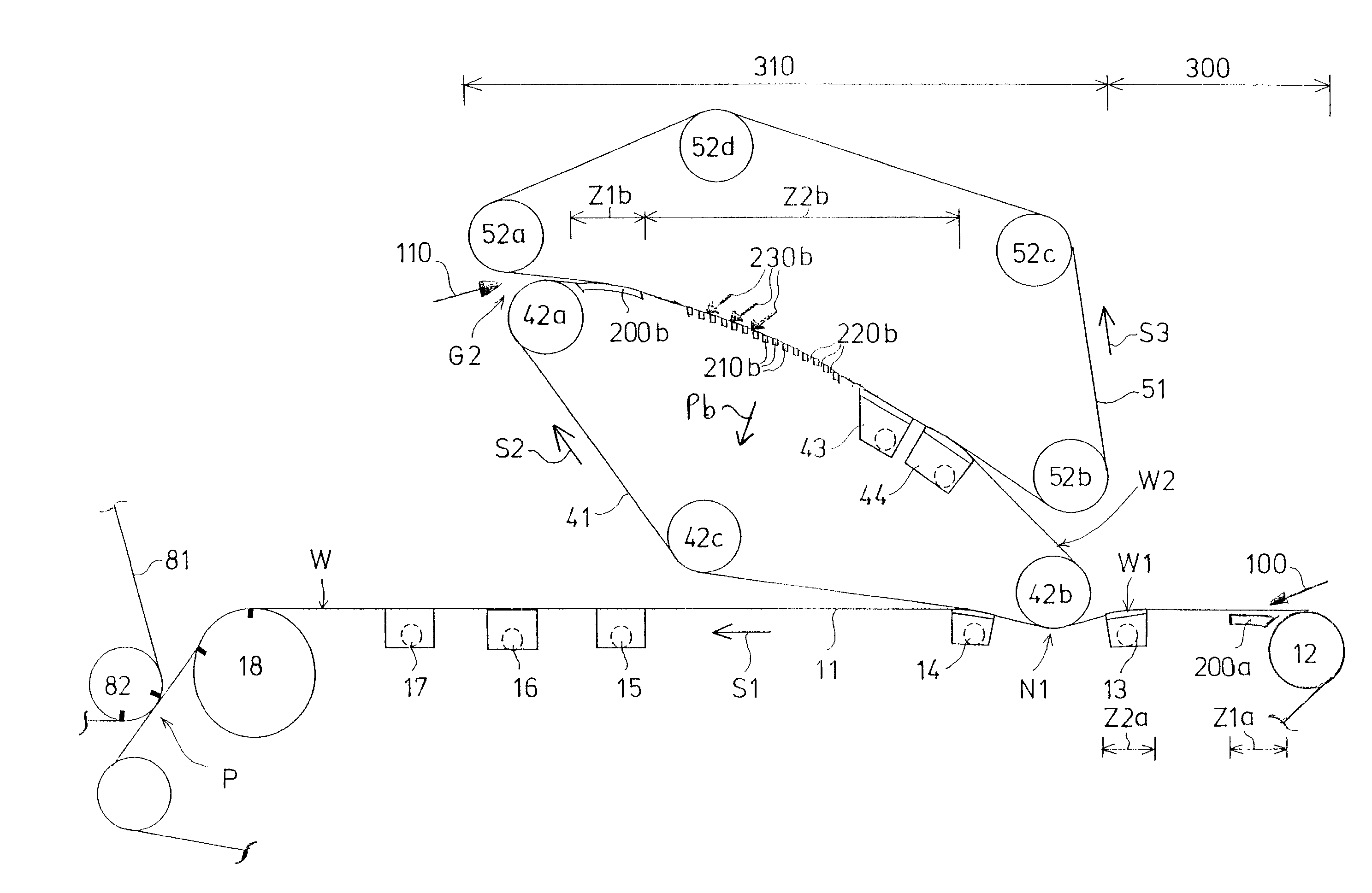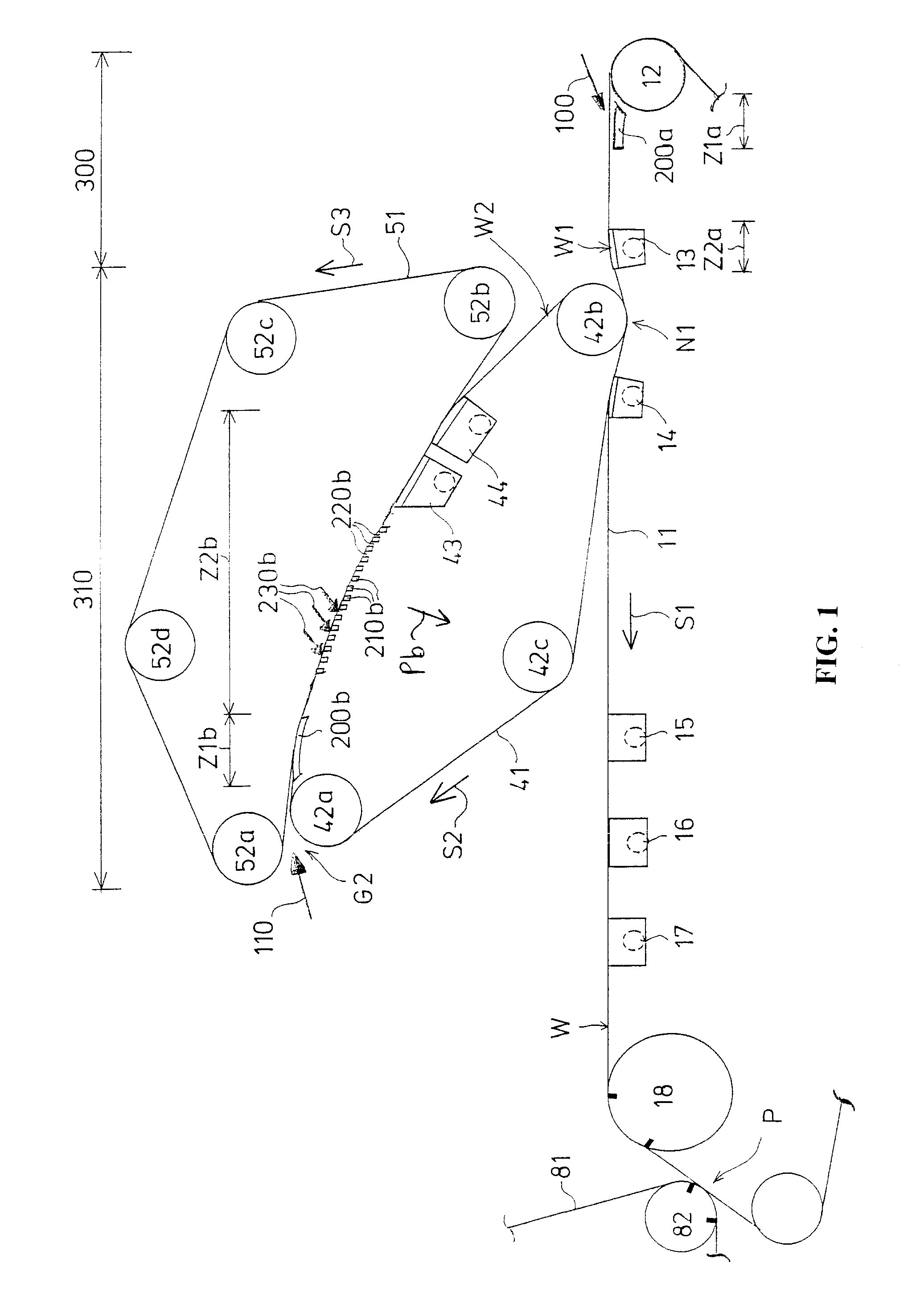Multi-layer web formation section
a web and multi-layer technology, applied in papermaking, non-fibrous pulp addition, coatings, etc., can solve the problems of not producing a final product of optimum quality, unpredictability, and poor retention, and achieve effective dewatering, prevent damage to the web, and improve the effect of web formation
- Summary
- Abstract
- Description
- Claims
- Application Information
AI Technical Summary
Benefits of technology
Problems solved by technology
Method used
Image
Examples
Embodiment Construction
[0038]FIG. 1 shows a formation section according to the invention provided with two successive wire units 300, 310. The first wire unit 300 is a single-wire unit and the second wire unit 310 is a two-wire unit.
[0039] The first wire unit 300 is formed by a bottom wire loop 11 and by dewatering equipment 200a, 13 arranged under the bottom wire 11. A first headbox 100 supplies a pulp suspension jet on to the bottom wire 11 to the forward end of the bottom wire, immediately after a breast roll 12 in order to form a first partial web W1. The travelling direction of the bottom wire 11 is indicated by an arrow S1, so this direction is also the machine direction.
[0040] After the first wire unit 300 there is a second wire unit 310. The second wire unit 310 comprises a first wire 41 made to form an endless wire loop with the aid of hitch rolls and guide rolls 42a, 42b, 42c and a second wire 51 made to form an endless wire loop with the aid of hitch rolls and guide rolls 52a, 52b, 52c, 52d. ...
PUM
| Property | Measurement | Unit |
|---|---|---|
| angle | aaaaa | aaaaa |
| overlap angle | aaaaa | aaaaa |
| overlap angle | aaaaa | aaaaa |
Abstract
Description
Claims
Application Information
 Login to View More
Login to View More - R&D
- Intellectual Property
- Life Sciences
- Materials
- Tech Scout
- Unparalleled Data Quality
- Higher Quality Content
- 60% Fewer Hallucinations
Browse by: Latest US Patents, China's latest patents, Technical Efficacy Thesaurus, Application Domain, Technology Topic, Popular Technical Reports.
© 2025 PatSnap. All rights reserved.Legal|Privacy policy|Modern Slavery Act Transparency Statement|Sitemap|About US| Contact US: help@patsnap.com



